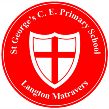Computing
Introduction
The use of computers and computer systems is an integral part of the National Curriculum and knowing how they work is a key life skill. In an increasingly digital world there now exists a wealth of software, tools and technologies that can be used to communicate, collaborate, express ideas and create digital content. At St George’s Primary School, we recognise that pupils are entitled to a broad and balanced computing education with a structured, progressive, approach to the learning how computer systems work, the use of IT and the skills necessary to become digitally literate and participate fully in the modern world.
Aims
The school’s aims are to:
+Provide a broad, balanced, challenging and enjoyable curriculum for all pupils
+ Develop pupil’s computational thinking skills that will benefit them throughout their lives
+ Meet the requirements of the national curriculum programmes of study for computing at Key Stage 1 and 2
+ To respond to new developments in technology
+ To equip pupils with the confidence and skills to use digital tools and technologies throughout their lives
+ To enhance and enrich learning in other areas of the curriculum using IT and computing
+To develop the understanding of how to use computers and digital tools safely and responsibly
The National Curriculum for Computing
The National Curriculum for Computing aims to ensure that all pupils:
+ Can understand and apply the fundamental principles of computer science, including logic, algorithms, data representation, and communication
+ Can analyse problems in computational terms, and have repeated practical experience of writing computer programs in order to solve such problems
+ Can evaluate and apply information technology, including new or unfamiliar technologies, analytically to solve problems
+ Are responsible, competent, confident and creative users of information and communication technology
Rationale
The school believes that IT, computer science and digital literacy:
+ Are essential life skills necessary to fully participate in the modern digital world
+ Allows children to become creators of digital content rather than simply consumers of it
+ Provides access to a rich and varied source of information and content.
+ Communicates and presents information in new ways, which helps pupils understand, access and use it more readily.
+ Can motivate and enthuse pupils.
+ Offers opportunities for communication and collaboration through group working both inside and outside of school.
+ Has the flexibility to meet the individual needs and abilities of each pupil




